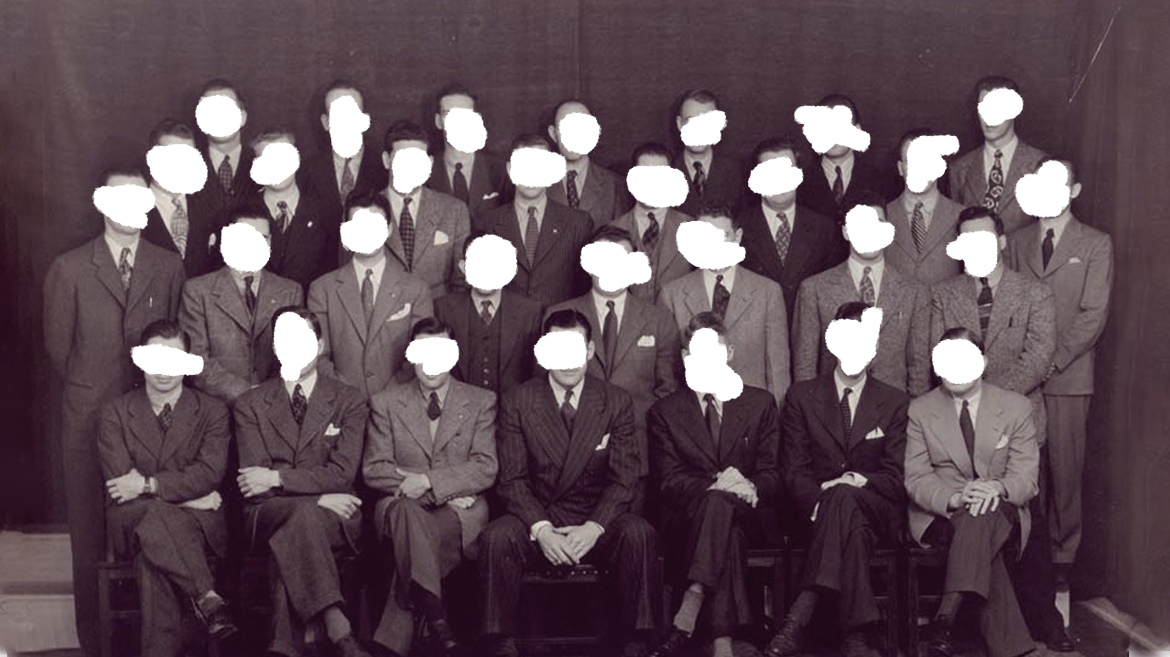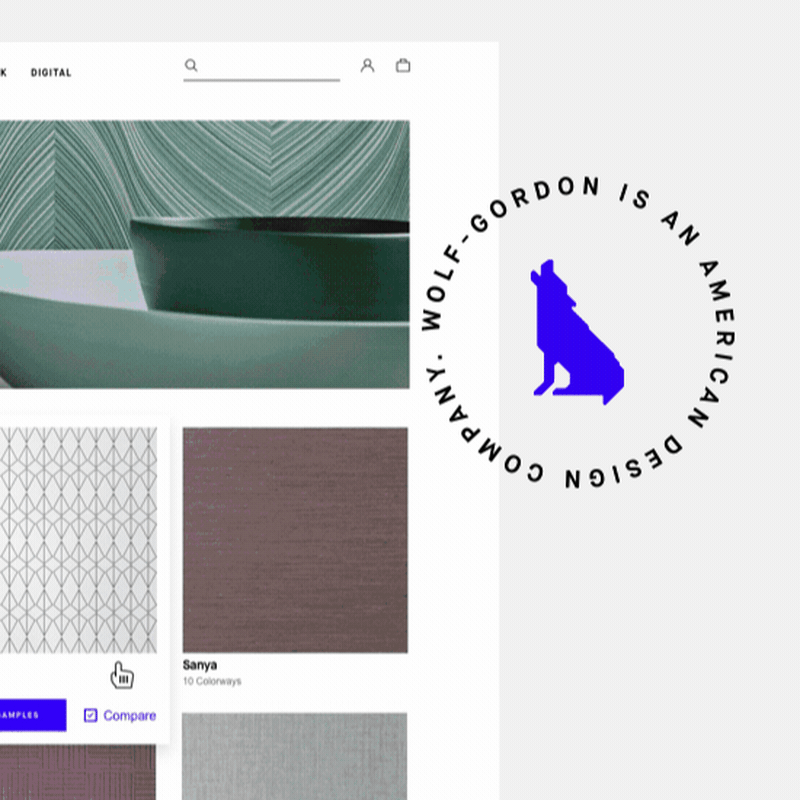The Old Boys Club: Why Agencies Continue to Lack Diversity

There’s no question that the marketing & advertising industry lacks diversity and inclusion.
Whether on the brand side or the agency, as the creators, crafters, and voices of brands, we speak to consumers of every race, age, and gender every day, and yet despite that diversity the source remains predominantly white and male.
But, this is not news. What this is is one of those white males calling himself and the rest out on how we’re standing in the way of what’s right.
Progress only happens when we recognize, discuss, and solve. So, this is a place for us to chat freely to recognize not just that the industry is lacking, or even that it’s all our fault, but one specific thing we’re doing wrong and how we can fix it.
So, this article is me, a privileged white male, telling you, fellow white male (because, you know, the odds), and anyone else who’s joined, how we have willingly or unwillingly prevented diversity and inclusion in the world of brands and agencies.
I don’t believe it’s powered by hate or fear.
I do believe it’s powered by laziness, complacency, and ignorance.
In all our comfort, we’ve nurtured this Old Boys Club in the workplace and beyond — the very one that may have landed you your job, and many before it — and that keeps so many out.
Like I already said, this is not news. But, then if it isn’t news, we are in fact complicit in preventing varied voices into this walled garden, are we not?
How we promote, mentor, hire, and socialize in the workplace — whether it’s employees, freelancers, or vendors — determines the diversity we see around us, simple as that.
We’ll specifically get to the hiring part, because it’s crucial, but let’s first talk briefly about the overall workplace, including promotions, mentorship, and all-around work culture: We white men are curators of cronyism at work, as in we suffer from in-group favoritism, awarding advantages to those we feel most comfortable with because we see ourselves in them. The result is paying others less, promoting and mentoring only our cronies, and inhibiting the growth of those we haven’t invited in behind The Great White Wall.
According to a McKinsey study from last year, 48% of entry level employees were women. Yet, by the time we get to middle-management, that number drops down to 38%. C-suite? 22%. CEO? Oh, brother, we’re down to 5%.
Now, I get it, I know what you’re thinking: it’s not our fault. We’re merely cogs in a flawed system, and we surely didn’t do it maliciously, right? Well, sorry, friends. We didn’t mean to run people over with our cars, but it happened, and it’s still happening. But, we don’t call it involuntary manslaughter in this case. We simply call it schmoozing.
We members of the boys club schmoozed our way in, through, and up. And we don’t make it easily accessible for everyone.
In this schmooze network, or Old Boys Club, we easily, smoothly, confidently, comfortably interact with each other and those in power to get the promotions and opportunities others won’t get access to, because they weren’t invited in here where power, influence, engagement and opportunity are restricted to those with a “seat at the table.”
You see, we use our history of male power and control to make our lives easier, despite what’s happening in the world, despite what’s been made apparent to us repeatedly, and despite us knowing there are other ways — not because we’re actively, purposefully malicious, but because we’re riding this long and wonderful wave that is being a white man in America. And so complacency, laziness, and ignorance overwhelm us.
Frightening fact for ya: 81% of women report they often feel excluded from business lunches, happy hours, and other opportunities to build relationships with male bosses.
You’ve seen it, right? I have, but instead of trying to dismantle it, I told them to “play the game.” For us, there’s ease and good times with the boys after work, and for everyone else, they can schmooze or lose, right? They can just play the game like we did. Couldn’t they just grab a drink or play a round of golf with the boss, like you have? Isn’t it exactly the same experience for them?
Well, no. It’s not, for many reasons, but one is because it’s a drug for us, but not so much for others. No, really. Research shows that oxytocin — the “cuddle hormone” — is released to create goodwill, trust, and favoritism when engaged with individuals who share characteristics. It’s instinctual, and actually a component of how groups and communities bonded and survived in more primitive times, but since when can we let primitive instincts dictate how we work and live today?
By giving in to our unevolved instincts, we’re placing the value of socialization above the value of professionalism, or humanity, or goodness, or experience, or ability, or even diversity of thought, opinion, and culture, amongst other things. We become “emotionally attached” to other white males in the workplace, whether we want to admit that it’s emotional or not. Ok, fine, call it “socially attached” you unevolved, emotionally-stunted man! In these relationships, we generate significant one-on-one time others rarely get access to, boosting certain careers but not all.
And all that schmoozing with the boys, it’s to assume you’re already in the party. But what about those waiting outside, or those who don’t even know it’s happening?
Karen Kaplan, Chairman & CEO at Hill Holliday, says, “Diversity is being invited to prom; inclusion is being asked to dance.” Yet, oftentimes, when in need of a hire, we don’t even announce the prom; we just access our network for quick, trusted candidates — often those we schmoozed or were schmoozed by. A greater group of people are not even being asked to dance because, for decades and centuries, the prom has been only for us.
We prevent inclusion before it even starts, letting the phrase “It’s all about who you know” reign supreme as a barrier of entry. Whether the entertainment industry or advertising, or anywhere else really, that’s the answer to, “How do I get my foot in the door?” Answer: already know the person who could hire you, or have a trusted connection you’ve already schmoozed.
So, before inclusion, and often blocking diversity, thereby keeping this prom private, I’ve unfortunately used and heard a common three-step process when hiring — to ask three questions, which I’ll get to momentarily.
Are our hearts in the right place when using our hiring process? Maybe. We’re helping friends we know and trust land jobs, making our own lives and jobs safe and secure along the way. But, it’s that laziness I spoke of; that ignorance and complacency to look beyond the old boys network to what’s possible, and great, and beneficial to all, including ourselves.
So here’s how it happens:
Instead of spending time sourcing and considering talent, meeting people outside our network to mentor, connect, and nurture, we revert to what and who we know and, in repetition, we form walls and clubs others can’t gain entry to.
We do it with three simple questions.
Who do we know? The first question asked when hiring, or even promoting — “Who do we already know so we don’t have to go through the whole courtship process? Who do we know that makes me feel comfortable because they’re like me?”
Who do we trust? After question #1, it then becomes, “Yeah, but do we trust them to do the job the first time so it makes my life easy? Do we trust them to make me feel comfortable because they’re like me?”
Who do we owe? Don’t think in terms of owing money here. This urge for repayment comes down to time, energy, favors, nepotism, and maybe money. “Who do we feel like we owe giving this work to because someone did me a favor last time? Who do we owe for making me feel comfortable because they’re like me?”
It’s these questions that not only limit diversity in hiring, it perpetuates the pay gap between men and women because when you have to ask who you’re promoting or giving a high-paying job to, and the questions are like these, your answer is not someone right for the job, it’s merely someone you’re close and comfortable with — the old boys club, because someone you can grab a beer with is someone you can get along with at work.
So, how do we overcome these faults?
The question shouldn’t be how one should enter the boys club, as we’ve expected everyone to do, it should be how the boys club should deconstruct the walls and invite in diversity, for the betterment of all.
It’s for them, me, and us to start where we began — by networking, schmoozing, connecting, and working harder at finding and nurturing talent outside ourselves. It’s now on us to fix what we broke — to challenge and question ourselves, start conversations, meet new people, and make the extra efforts — to go beyond the great comforts we’ve enjoyed to make the greater efforts of seeking entry into their networks in hopes of learning and experiencing beyond our boys clubs.
And, we must do it actively, openly, and continuously.
The effort of specifically inviting diverse candidates on Linkedin is a welcome move to proactively (or is this reactively?) connect with new communities, but asking your social community to “send” candidates your way is not enough, nor is it sustainable. You have to actually change the way you hire and connect consistently, and that starts by asking different questions in those moments.
We do this or else we risk perpetuating the terrible divides that not only limit business and society today but that dehumanize it and us.
So, look at yourself, your network, and your company. Recognize faults and look for ways to progress forward, abandoning all old ways that limit or prevent anyone.
Surely, your leadership team all the way down will be lacking for unique, diverse voices, opinions, and backgrounds, so calling out and canceling are merely pointing out reality and celebrating a job well done when in fact no work has been done.
Beyond recognition, we must work harder at making new connections, not relying on old, and progressing diversity and inclusion.
And, if you wonder where you can start being proactive in not asking those base questions that support the old boys network and maintain your comfortable complacency…
Start here:
• 28 Black Designers
• 3% Movement
• 4As MAIP
• 600 And Rising
• Asian Career Network
• Bid/Black
• Black Career Network
• Black Creatives
• Blacks Who Design
• c0ffe3
• Creative Equals
• Creative Women of Color
• Diverse Creatives
• Diversity.com
• Gradient Group
• Hue
• iHispano
• Invisible
• Latinxs Who Design
• The Boom List
After you’ve engaged with all of those, try being more creative with your hiring. Draw lines, take stands, get uncomfortable, and push harder to break into new networks. Then, go find new voices on Linkedin to follow. You don’t have to know them to follow, but your feed will suddenly start filling with new voices, ideas, and content. Suddenly you’ll have fewer GaryVee quotes and more perspectives and experiences of other, greater minds. Walter T Geer III, Jezz Chung, and Cortni Grange are a few people I don’t know but are making my Linkedin a more dynamic social experience simply by me seeing what they share instead of just my usual crap that keeps me complacent and close-minded.
Just a few simple steps, and only just the beginning, but actions speak louder than press releases or a diversity plan that no one understands or uses.
And finally, if you are, or know, someone looking to get in at Digital Surgeons or a similar company, or just want advice, you can reach out to me directly at james.dowd@digitalsurgeons.com (Use my network, use my experience, use me!) or our Head of Talent, Jaime Laufer, at jaime.laufer@digitalsurgeons.com.
Job openings can be found here, but another dirty secret of the advertising industry is that, oftentimes, roles are filled before they’re posted, because someone asked those three questions mentioned above, so never rely on postings when you can rely on people.
“If hiring is about who you know, then people hiring should make the effort to know more people.” – Kellie Pcolar
I only hope with this article I can be a better person for those seeking entry, mentorship, promotion, and experience — an ally.
Interestingly enough, my greatest fear in writing this is that I’d say/write something wrong, and be villainized, when my greatest fear should be that nothing changes in our world — that no progress is made in diversity and inclusion, that agencies and brands act small and move slow, that all of the protesting be for nothing, that all of the effort and energy be for nothing, that we look back and the walls still stand.
So, let’s chat about being better.
james.dowd@digitalsurgeons.com
https://www.linkedin.com/in/jvincentdowd/


